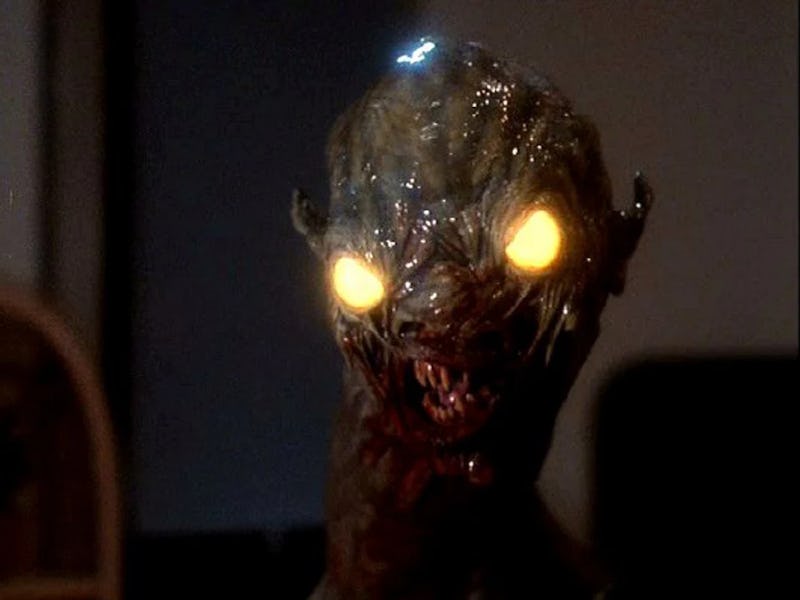You need to watch the most underrated sci-fi cult classic on Amazon Prime ASAP
One ‘80s creature feature stands out from the pack.

As the ‘70s gave way to the ‘80s, horror experienced a revolution. In 1979, Ridley Scott and Sigourney Weaver delivered Alien, upending preconceived notions of what monster movies could look like. No longer were creature features the purview of 1950s cliché, monsters stumbling through heavy rubber suits. Suddenly, they were very scary. A year later, Stanley Kubrick brought the horror of isolation down to Earth with The Shining.
These two movies came at the beginning of a new wave of horror, along with Halloween, Friday the 13th, and A Nightmare on Elm Street. But within a few years, horror movies were drowning in success. Sequels and cheap knockoffs began propagating. While the clichés of the 1950s had been shaken loose, new ones reared their heads.
Out of all the B-horror movies of the 1980s, C.H.U.D. stands out. The first and only directorial venture of Douglas Cheek has found an unexpected resonance in recent years, finding new life as both an Internet meme and a reference point for broader ‘80s horror absurdity. But actually watching the movie reveals a better film that its pitifully low Rotten Tomatoes score would suggest. Now that C.H.U.D. is on Amazon Prime, here’s why you should see it.
C.H.U.D. stands for Cannibalistic Humanoid Underground Dwellers; it’s an acronym that sounds ugly and likely re-entered the American lexicon when Kevin Smith invoked the term as an insult in Clerks 2. “You’re the most hideous f*cking chud I’ve ever met,” Jeff Anderson’s Randal tells Brian O’Halloran’s Dante, a burn that works because ‘chud’ is both evocative, dismissive, and mysterious. It sounds really bad. But what it is, really?
John Heard and Kim Greist in C.H.U.D.
C.H.U.D the movie starts off with a woman walking down a street in New York City. Filmed on location, the 1984 film serves as a time capsule for the SoHo neighborhood in which it was shot. Now the type of trendy area where rent for a 1-bedroom apartment can easily surge past $7,000, SoHo belonged to a radically different New York in the time of C.H.U.D.
The same year the movie came out, a man named Bernie Goetz shot and wounded four young Black men in the subway, claiming they were going to rob him. The shooting became a national story, speaking to both the lawlessness and racism many felt pervaded the Big Apple. In C.H.U.D., when the woman walking down the street gets suddenly grabbed and pulled down into the sewers, it feels like just another day in town.
Cheek pushes this point in the next scene; all that’s left of the woman is her shoe, which gets swept out of view with the rest of the trash by sanitation.
A scene from C.H.U.D.
The plot of C.H.U.D revolves around a few different groups of people: homeless New Yorkers, journalists, police, and employees at the Nuclear Regulatory Commission. Homeless people are disappearing, and only a few people seem concerned, like photographer George Cooper (John Heard, who would later play the father in Home Alone), a once famous fashion photographer who now takes pictures of the homeless. He gets annoyed rather easily by his model girlfriend Lauren (Kim Greist), who insists on getting him jobs via her perfume ads.
Also concerned with the sudden rash of disappearing people is the NYPD’s Captain Bosch (Christopher Curry). The woman who disappeared in the first scene? It was his wife! Looking for any clues, he turns to A.J. "The Reverend" Shepherd (Daniel Stern, who would later play bad guy Marv in Home Alone), a hippie who runs a local homeless shelter. Stern’s big break — his voice-over work in The Wonder Years, which would cement him as a mainstay in animation and family-oriented programming — was still years away. But he’s clearly C.H.U.D’S breakout star.
Police prepare for action in C.H.U.D.
A.J has messy hair and is derided by suits as a hippie, but he is clearly passionate about his work at the shelter. He and Bosch are able to put their differences aside and investigate what’s happening. Beneath the streets, they find a mysterious Geiger counter, used to detect radiation.
However, when they present clear evidence of the attacks to Bosch’s superiors, their hunt is stopped cold by the nefarious Wilson (George Martin), who works at the Nuclear Regulatory Commission. Wilson is extremely dismissive of the disappearances. Almost too dismissive, one might say. It’s almost as if the Nuclear Regulatory Commission is turning people into hideous C.H.U.Ds, but that would be crazy.
Watching C.H.U.D, it’s clearly a B-movie. But it’s a B-movie with ambition. Speaking in an interview meant to set the record straight on C.H.U.D, producer Andrew Bonime told Bloody Good Horror that he “originally envisioned the film as being in the league of Alien,” but failed to get the budget.
Writing a letter to the New York Times in 2001, C.H.U.D screenwriter Parnell Hall wrote that he initially imagined people turning into C.H.U.Ds because of nuclear weapons, but some of the movie’s investors “had defense contracts, so I was told to ditch the missiles.” Fair to say, C.H.U.D’s third act isn’t as compelling as it should be.
But it’s very easy to overlook these flaws. It’s a fun movie! It has a surprisingly great John Carpenter-esque soundtrack! Young John Goodman has a split-second role as a flirtatious police officer who gets eaten by a C.H.U.D! Sometimes, the movies that stick around as ironic jokes work better that way, even if they’re — like C.H.U.D. — solid on their own terms.
C.H.U.D. is streaming on Amazon Prime.